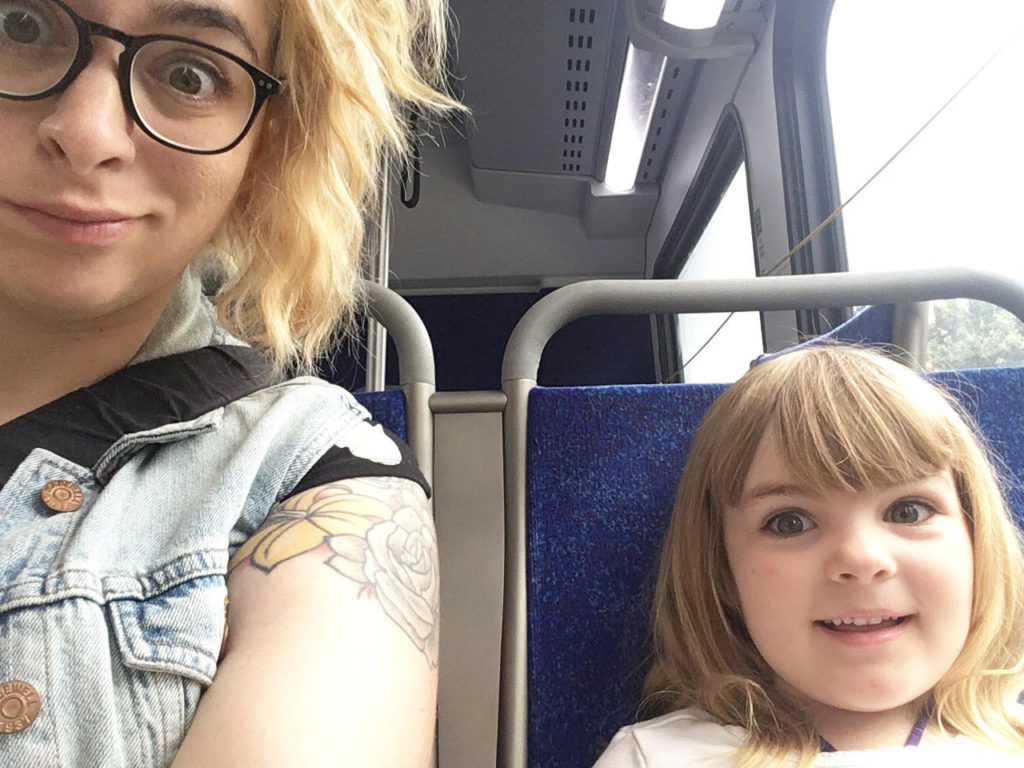(She/Her) | Philadelphia, PA

I am the Director of Development and Communications in a nonprofit, civil rights law firm in Philadelphia and mother of two children. Like many mothers in Philadelphia, I have relied on public transit as our main form of transportation. Over the past decade I have relied on public transit to get myself to work, and my children to their various activities including school and doctor’s appointments, and use transit to shop for our family’s needs. My husband and I own a car which he mainly uses to commute over 20 miles every day to work in NE Philadelphia. His job location lacks frequent and reliable public transportation access, especially to accommodate his work schedules which require non-traditional 9-5 hours. As the parent with more flexible job hours, I’ve always been in charge of getting our kids to daycare and then school.
Getting a second car is not doable for us or our family for several reasons but especially financially. Living in a city the cost of car ownership and storage is just a burden we cannot take on.
Transit has been a very central part of our lives. It’s such a vital part of how we move around the city. When my children were very young we lived in Northwest Philadelphia and to get my children to daycare it required me to take a bus on a highway every day with a toddler and infant. We would be burdened by car traffic on this route, often all three of us were forced to stand because of how overcrowded the bus could get. Often this 20-minute trip would take over an hour. Although my children are older now, public transit continues to be vital to how we travel in the city. They have begun to learn how to take transit by themselves to places like after-school activities.
I live a mile and a half from Center City, so not very far. While everything in Philadelphia might be 20 minutes away, I always try to plan that it takes me a full hour to get anywhere to make sure I’m not late to appointments. I can’t always rely upon the fact that buses, particularly in Philadelphia, will be where I need them to be at the right time.
A typical day for me includes dropping my children off at school and heading to my job in Center City. My job requires me to transverse the city throughout the week and I take public transit to get to where I need to go. Later in the evening, I choose to take the subway or the 45 bus back to my home.
While we have many positive experiences on transit, the fact that busses are often not on time has really impacted my life too. For example, while I was working in West Philly I planned to meet my husband in South Philly for our children’s doctor’s appointment. I was waiting for the 40 bus on Lancaster Ave, which was a direct route from where I worked at 40th and Lancaster to where I was going to Second and South. This bus has a pretty long route, and it is often infrequent and not on time. I had given myself a whole hour and a half to get there and left work early to do so. By the time the bus came however their doctor’s appointment was over. Once I got on the bus, it was overcrowded because it had been so late, which is a frequent issue on this route. It would have been quicker for me to take a trolley to a subway and then walk 14 blocks. I remember talking to my boss and saying, “I had to leave work early to do this,” and I couldn’t even get there.
For parents, another problem is buses in Philadelphia are not equipped to carry strollers. The requirement here is that you have to fold up the stroller before getting on the bus. Trying to hold a child, fold down a stroller, and get on a bus is difficult, to say the least. Making sure that our fleets are equipped to serve the people who are using them, such as mothers with children, but we need the funding to do that. On top of that, many of our subway stations are not ADA accessible as they lack elevators. Making sure that our subways have elevators is important when traveling with my friends and family members who have mobility issues or young children with them. Our trolleys, which are an amazing legacy system, are not modernized. They too are not ADA accessible. So again, it’s problematic for both folks with disabilities and for parents with young children to use them. Without a surge of federal funding, a lot of these projects are never going to move and we’re never going to have ADA stations that are equipped for families and folks with disabilities.
Philadelphia, like so many of our communities, needs funding because even though the transit system is pretty good, it ultimately is not accessible or frequent enough to best serve our neighborhoods.
